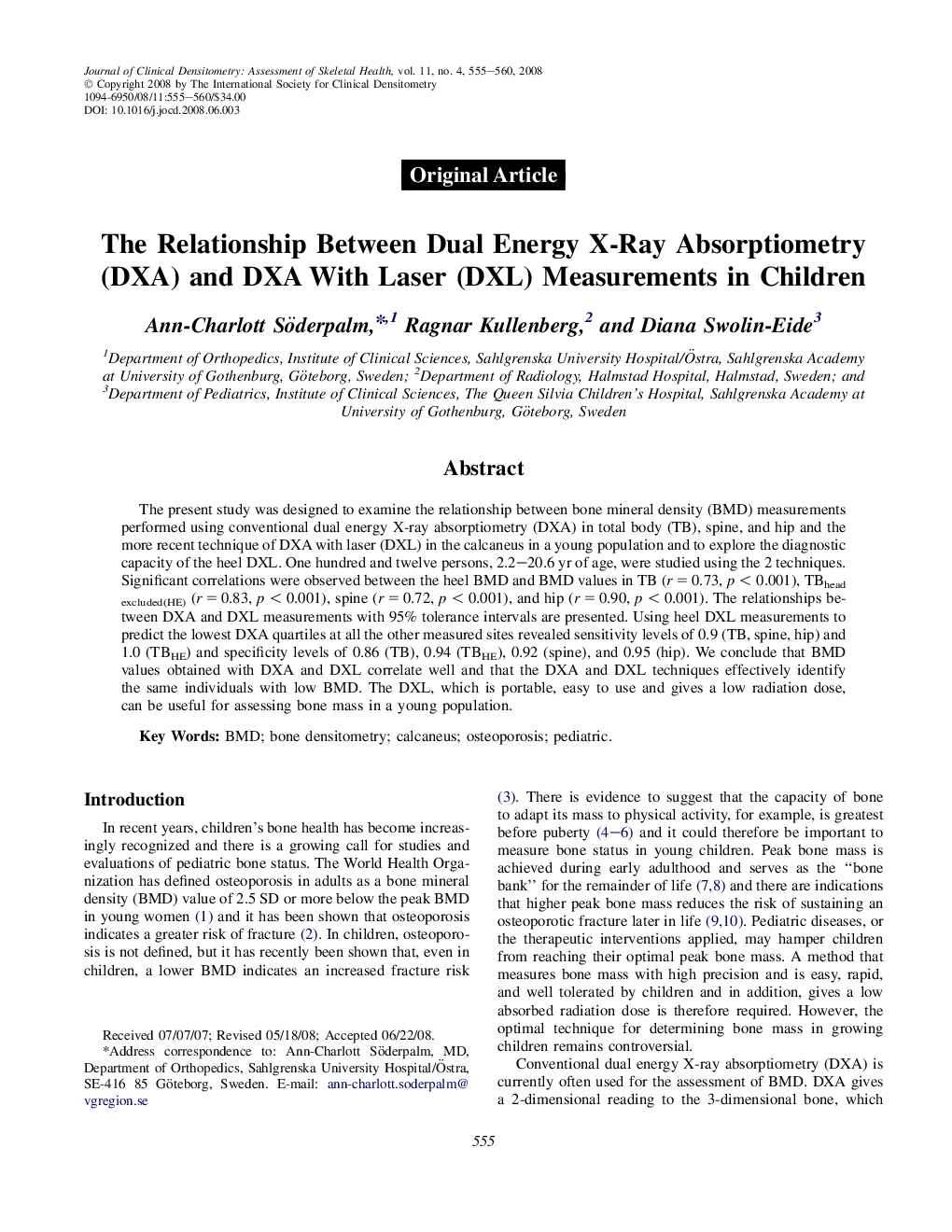| کد مقاله | کد نشریه | سال انتشار | مقاله انگلیسی | نسخه تمام متن |
|---|---|---|---|---|
| 3271355 | 1208269 | 2008 | 6 صفحه PDF | دانلود رایگان |
عنوان انگلیسی مقاله ISI
The Relationship Between Dual Energy X-Ray Absorptiometry (DXA) and DXA With Laser (DXL) Measurements in Children
دانلود مقاله + سفارش ترجمه
دانلود مقاله ISI انگلیسی
رایگان برای ایرانیان
کلمات کلیدی
موضوعات مرتبط
علوم پزشکی و سلامت
پزشکی و دندانپزشکی
غدد درون ریز، دیابت و متابولیسم
پیش نمایش صفحه اول مقاله

چکیده انگلیسی
The present study was designed to examine the relationship between bone mineral density (BMD) measurements performed using conventional dual energy X-ray absorptiometry (DXA) in total body (TB), spine, and hip and the more recent technique of DXA with laser (DXL) in the calcaneus in a young population and to explore the diagnostic capacity of the heel DXL. One hundred and twelve persons, 2.2-20.6 yr of age, were studied using the 2 techniques. Significant correlations were observed between the heel BMD and BMD values in TB (r = 0.73, p < 0.001), TBhead excluded(HE) (r = 0.83, p < 0.001), spine (r = 0.72, p < 0.001), and hip (r = 0.90, p < 0.001). The relationships between DXA and DXL measurements with 95% tolerance intervals are presented. Using heel DXL measurements to predict the lowest DXA quartiles at all the other measured sites revealed sensitivity levels of 0.9 (TB, spine, hip) and 1.0 (TBHE) and specificity levels of 0.86 (TB), 0.94 (TBHE), 0.92 (spine), and 0.95 (hip). We conclude that BMD values obtained with DXA and DXL correlate well and that the DXA and DXL techniques effectively identify the same individuals with low BMD. The DXL, which is portable, easy to use and gives a low radiation dose, can be useful for assessing bone mass in a young population.
ناشر
Database: Elsevier - ScienceDirect (ساینس دایرکت)
Journal: Journal of Clinical Densitometry - Volume 11, Issue 4, OctoberâDecember 2008, Pages 555-560
Journal: Journal of Clinical Densitometry - Volume 11, Issue 4, OctoberâDecember 2008, Pages 555-560
نویسندگان
Ann-Charlott Söderpalm, Ragnar Kullenberg, Diana Swolin-Eide,